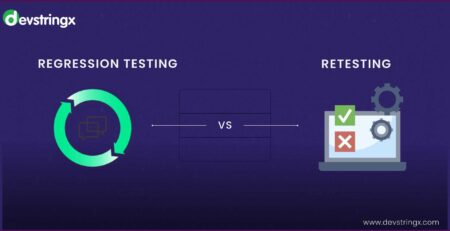Code Coverage vs Test Coverage – Devstringx
Code coverage is an essential metric for testing. It measures how much automated tests are testing your source code. Code coverage is a measure to see whether the source code has been properly tested. We, as software testers, are responsible for ensuring that our product has sufficient test coverage. Test coverage refers to measuring different tests (code statements) and their execution to determine what fraction of the source code was executed while testing. Both code coverage and test coverage have their unique significance in software testing. This article highlights the differences between code coverage and test coverage.
Test coverage is the measure of how much source code has been tested. Code coverage measures how many statements in our source code are executed by our tests. These two metrics can help us identify potential problem areas in our code, find untested or unreachable branches, and see if we have a high enough test execution rate to feel confident about our finished product. There are several code coverage measurements: line, statement, branch, decision, and variable. It’s important to understand the differences between code coverage and test coverage to choose the best one for your project. Let’s check them out!
What Is Code Coverage?
Code coverage is the term used to measure how much of the source code has been exercised (executed) by the test cases. It is a metric used in software testing to determine how thoroughly the source code has been tested. Code coverage is not a synonym for test coverage. The code coverage tool is used to measure the code coverage. Code coverage is the percentage of the source code executed (covered) by the test cases. The following are the two types of code coverage –
What Is Test Coverage?
Test coverage refers to measuring different tests (code statements) and their execution to determine what fraction of the source code was executed while testing. The test coverage tool is used to measure test coverage. Test coverage is the percentage of the total test cases executed while testing. The following are the two types of test coverage – – Statement coverage – Measures the number of code statements executed while testing. – Decision coverage – Measures the number of if-else conditions executed while testing.
Differences Between Code Coverage and Test Coverage
Code coverage is the metric used to determine the coverage of the source code, while test coverage is the metric used to determine the coverage of the test cases. The following are the key differences between code coverage vs test coverage –
- While code coverage is a percentage, test coverage is a percentage.
- While code coverage is calculated based on the source code, test coverage is calculated based on the test cases.
- While code coverage is calculated based on the number of times a statement is executed, test coverage is calculated based on the number of times each condition is executed.
- While code coverage is calculated based on the lines and functions, test coverage is calculated based on the test cases.
- While code coverage is calculated based on the modules, test coverage is calculated based on the test cases.
- While code coverage is calculated based on the branches, test coverage is calculated based on the if-else conditions.
Importance of Code Coverage and Test Coverage
Code coverage and test coverage are two important metrics that help measure the software quality for which we are responsible. They also help us determine whether the product is fit for release. – Code coverage helps measure the code coverage and check how thoroughly the source code has been tested. – Test coverage helps measure the test coverage and check how thoroughly the test cases have been executed while testing. The following are the key advantages of code coverage and test coverage.
Conclusion
Code coverage and test coverage are two metrics used in software testing to determine the quality of the product. While code coverage is a percentage, test coverage is a percentage. Code coverage is calculated based on the source code, while test coverage is calculated based on the test cases. It is calculated based on the lines and functions, while test coverage is calculated based on the test cases. Code coverage is calculated based on the modules, while test coverage is calculated based on the test cases.
Code coverage is calculated based on the branches, while test coverage is calculated based on the if-else conditions. These are the key differences between code coverage vs test coverage. Code coverage and test coverage are two important metrics that help measure the software quality for which we are responsible. They also help us determine whether the product is fit for release.
FAQs
- Is test coverage identical to code coverage?
Test coverage shows whether the existing tests cover all of the program’s functional requirements. In contrast, code coverage lets you determine whether the existing tests perform each code line in the software application.
- Do more tests mean better code quality?
In particular, test coverage verifies how thoroughly a test suite has examined the code, as mentioned earlier. The more thoroughly the code has been tested, the higher the test coverage. Higher is better is the logical conclusion that follows from this.
- What advantage does code coverage provide?
Code coverage can be used as a diagnostic tool to determine what code has been run for a specific transaction. You may learn from this which modules, objects, and functions were used to complete the transaction. The tool only displays what has been executed; it does not display the path.
- Can code coverage be automated?
Because automation enables you to use the time you would have spent running tests to develop new test scenarios and create new tests, it is the most effective method for increasing test coverage. There is a linear relationship between test coverage and testing time when manual testing is done.
Related Post–














